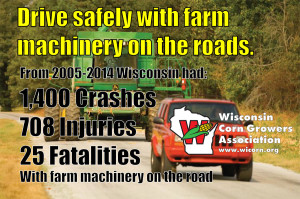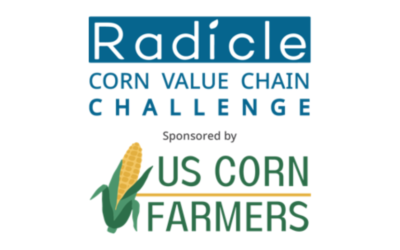 Farm Safety Week a reminder to farmers and motorists
Farm Safety Week a reminder to farmers and motorists
With the fall crop harvest set to get underway, motorists and farmers are urged to be more cautious on rural roads to stay safe, according to a coalition of farm and traffic safety groups.
“It’s necessary for farmers to move large agricultural machinery between fields on our public roads to get our crops harvested, stored or transported to market,” according to Sergeant Jeff Heil, Traffic Safety Coordinator for the Dane County Sheriff’s Department. “The fall harvest season also brings increased traffic to the rural areas of Dane County and other area counties as people come to farmer’s produce stands and large events including corn mazes and pumpkin patches. Motorists need to watch for slowing, stopping and turning vehicles from the increased traffic these events create.”
“During this busy time of the year, we urge farmers and motorists to share responsibility in keeping our rural roads safe in the coming weeks,” said Wisconsin Corn Grower Association president Casey Kelleher, Whitewater. “If everyone on the road is alert, cautious and courteous, there’s no reason we can’t have a safe and productive fall harvest.”
The week of Sept. 21 is National Farm Safety Week to make farmers and motorists more cautious during the coming weeks. New Wisconsin traffic rules that are in effect make it illegal for a motorist to pass farm machinery in a no passing zone. Motorists are also prohibited from passing on the shoulder.
“When approaching a vehicle, a motorist should look for a Slow-Moving Vehicle (SMV) emblem. This emblem is triangular in shape with an orange center and red edge and used to indicate that the vehicle usually travels less than 25 mph,” explained Cheryl Skjolaas, Agricultural Safety and Health Specialist with the UW Center for Agricultural Safety and Health. “The difference in speed between slow-moving farm machinery and a faster motor vehicle is a key factor in many crashes. A motorist upon seeing this emblem should slow down and start to observe other lighting and marking on the farm machinery.”
Wisconsin recently updated laws on the lighting and marking of agricultural equipment or machinery. These new requirements are meant to increase the visibility of the farm machinery to a motorist. Unlike cars and trucks, farm machinery have differing size dimensions as they are designed for field application instead of road travel. Width is one dimension that is being addressed with the new lighting and marking requirements.
If farmers have wide equipment, they may legally operate over the center of the road into a lane intended for travel in the opposite direction but are required to yield the right-of-way to oncoming vehicle. Farmers have the right to operate on the roadway and are not advised to operate on the shoulder. If possible, operators of farm machinery should yield the roadway to an overtaking vehicle and pull over as to not impede the normal movement of traffic.
“With a little patience and cooperation on everyone’s part, we can all be safe during the harvest season,” said Nick Jarmusz, Director of Public Affairs for AAA Wisconsin. “Because of the slow speed and size of farm machinery, motorists may miscalculate how fast they are approaching the equipment.”
“Unlike 50 years ago, many motorists are now several generations removed from the farm and they don’t necessarily understand how, when and where famers operate the machinery that they do,” said Wisconsin Farm Bureau Federation president Jim Holte, Elk Mound. “Machinery is also getting bigger. All the more reason why both motorists and farmers need to take extra precautionary safety measures when driving on rural Wisconsin roads.”
According to the Wisconsin Department of Transportation, in the last two years there were 345 Wisconsin traffic crashes involving farm machines. These crashes caused 171 injuries and 3 fatalities. In the last ten years there have been about 1,400 Wisconsin traffic crashes involving farm machines. These incident have caused 708 injuries and 25 fatalities.
Safety tips for motorists:
- Be patient when encountering farm machinery on the road.
- Pass farm machinery only in a passing zone and when it is safe to pass.
- Do not pass on the shoulder.
- Be aware that farm equipment slowing down may be making a left turn.
- Exercise extra caution around blind curves and intersections.
- Be extra careful at night.
- Be aware of increased and slowing traffic at farm market and tourism locations.
Safety tips for farmers:
- Have proper SMV signs and lighting.
- Operate legally on roads.
- When possible, pull over and allow other vehicles to pass.
- Secure equipment on truck beds or transport trailers
- Check blinds spots before crossing roadways and making turns on roads.
- Stay refreshed during long days of harvesting.


